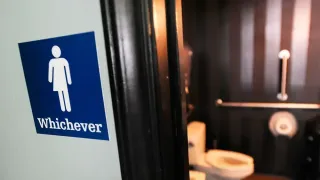December 15, 2024
What the US Supreme Court Will Consider When It Rules on Gender-Affirming Care for Trans Children
READ TIME: 8 MIN.
Sex Discrimination
The U.S. and ACLU argue that SB1 discriminates based on sex, and thus it is based on a quasi-suspect classification. Tennessee rejects this claim.
Here, in brief, is how the argument that SB1 discriminates based on sex goes.
Under SB1, the only minors prohibited from getting feminizing sex hormones such as estrogen are minors who are assigned male at birth. Similarly, the only minors prohibited from getting masculinizing sex hormones such as testosterone are minors who are assigned female at birth.
Thus, whether a minor is prevented from being able to get the treatment depends on the minor's sex. Similar arguments can be made about use of puberty blockers. That, the U.S. and ACLU claim, is sex-based discrimination.
Tennessee advocates a different understanding of whether sex-based discrimination is at work in the law. It argues that all youth, no matter their sex, are prohibited from taking hormones or puberty blockers that would help them identify with a sex other than the one they were assigned at birth. In this way, they argue, the law is not about sex.
In the Supreme Court's 2020 decision Bostock v. Clayton County, Justice Neil Gorsuch and Chief Justice John Roberts sided with the court's liberals in holding that discrimination based on sex under Title VII of the Civil Rights Act of 1964 included discrimination based on gender identity and sexual orientation. This decision provided LGBTQ people with nationwide protection against employment discrimination.
The U.S. and ACLU offer a similar argument in Skrmetti to the one in Bostock. But in Bostock, the court was interpreting the text of a law that explicitly mentioned discrimination based on sex. In this case, the court is interpreting the equal protection clause, which doesn't make explicit reference to sex discrimination. Thus, the justices may not think the same kind of reasoning applies.
The court faces questions in Skrmetti other than whether the law discriminates based on sex. The parties also disagree about how good the evidence is that gender-affirming care is safe and effective. The court could rule on that question too, or it could require the lower court to resolve that issue.
The court could also address whether gender identity should be recognized as a new suspect or quasi-suspect classification, although recent history suggests it is unlikely to do this.
What's Next?
The court will likely issue its decision by the end of June 2025. In the meantime, SB1 remains in effect. There are similar laws in half of all states that are part of other legal battles.
If the court concludes that SB1 is a case of sex discrimination, this would establish a precedent that would make it easier for others to challenge laws prohibiting or restricting gender-affirming care. It might also help trans people litigate other kinds of cases, such as challenges to laws restricting which restrooms trans people can use.
But if the court concludes that SB1 does not discriminate based on sex, that would make it harder for trans people to win in future cases in which they claim that a law discriminates against them.![]()
Mark Satta, Associate Professor of Philosophy and Law, Wayne State University
This article is republished from The Conversation under a Creative Commons license. Read the original article.






